Lectures 2017/2018 Membership Year
Lectures start at 11.00am with coffee from 10.15am and are held (except in August
and December) at Victoria Hall, Oakham
2018
24 May
Hilary Guise
Marc Chagall and the supremacy of Blue
No synopsis yet.
Background on Marc Chagall
Marc Chagall, 'The Green Donkey' 1911
28 June
Patsy Erskine Hill
The British at the Court of the Tsars
Spies, Merchants and Adventurers…
Before the eighteenth century, foreigners
were feared as unholy, and very few had
ever entered Russia. In 1700, however,
Russia needed help: Peter’s army was a
disorganized rabble with no military
tradition and no discipline; he had almost
no coastline, and thus no navy; his
countrymen were illiterate and fearful of
progress. Foreigners were hired in to
help in all these fields, and British
merchants became increasingly
numerous. Later, when Russia became a world power, it attracted ever-growing
numbers of tourists and adventurers, lured by its exoticism, tales of stupendous
aristocratic wealth, and sometimes, its remoteness from the long arm of British
justice.
Above: Ivan IV of Russia Shows His
Treasury to Jerome Horsey
(Alexander Litovchenko, 1875)
English house in Moscow
English Silver at the Court of the Tsars
Background to trade between Russia and Britain
Background of the London Muscovy Company
There is no lecture in July.
23 August
Lecture and Summer Lunch (the lecture is included in your membership).
We hope you will join us for our Summer Lunch afterwards, there is an additional cost
for the lunch. See booking details below
Elizabeth Merry
Town Mouse, Country Mouse: Art and Nature in the work of Beatrix Potter
The only daughter of well-off parents, Beatrix Potter’s childhood was spent in almost
complete seclusion in West London. The ordered formality of the household made no
concessions to the demands of children, so Beatrix and her
brother Bertram created their own absorbing creative world
upstairs in the nursery and schoolroom. Inspired by summers
spent in Scotland and the Lake District, she became a
passionate amateur naturalist, drawing, painting, dissecting
and examining whatever flora and fauna she and Bertram
could smuggle back into the London house.
By the time she was a young adult, still living at home,
unmarried and still very much under the jurisdiction of her
parents, her watercolour paintings of botanical and zoological
subjects were meticulous, detailed and accomplished. She
could undoubtedly have become a professional
botanist – indeed a paper of hers on the spores of
Fungi was read out at the Linnaean Society of
London in 1897, but because she was a woman
her theories were dismissed. It was with the
creation of Peter Rabbit that Beatrix Potter’s
private world became the key to her future independence; and those unique and
exquisitely illustrated little books have ensured her place among the Immortals of
children’s literature.
Beatrix Potters web site
Lecture and summer buffet lunch at Greetham Valley Golf Club
Thursday 23 August 2018
Lecture: ‘Town Mouse, Country Mouse’ at 11.00am (coffee available from 10.15am)
Lunch to follow the lecture. Cost for lunch is £23 per member and £28 per guest, to
include the lecture.
Click here for a booking form and further details
27 September
Thomas Chippendale the Younger and George Bullock
Janusz Karczewski-Slowikowski
After Chippendale’s death in 1779, his eldest son, also
named Thomas, carried on his cabinet-making business
until 1804. Chippendale the Younger & George Bullock
were brilliant designers and skilled craftsmen. Their
original and stylish furniture designs belong to the later
neo-classic styles of the late 18th and early 19th
centuries.
Chippendale Jr. died in 1822 at the age of 73 but Bullock
died aged 35 in 1818 - a tragically young age but one by
which he was already known as an “eminent artist” of
“peculiar genius”; both were influential in transforming
the character of early 19th century design and Bullock’s
work was to foreshadow the aesthetic movement of
Victorian times. The furniture of Stourhead, Wiltshire is
one of the younger Chippendale’s best known and
documented commissions.
A pair of candelabras by George Bullock
More information on George Bullock
25 October & AGM (The last lecture in the current membership year)
Edward Saunders
Petra, the Rose Red City
Petra, built within the Biblical
mountains of Edom in southern
Jordan, is one of the most
extraordinary and memorable sites of
the ancient world. It was once the
centre of a great civilisation
established by a people called the
Nabateans, who came into the area
from the Arabian peninsular about 500
BC, and their surviving tomb
monuments, carved from the solid
rock, still astound and overwhelm
today.
In contrast, Palmyra, to the north in the Syrian desert and east of Damascus, boasts
a vast assembly of ruins scattered across the desert floor, which, with their richly-
carved ornament and the splendour of the column-lined streets, evoke the grandeur
and ostentation of the late Roman Empire. As Petra began to decline in the 2nd
century AD, so Palmyra rose to its height, but both cities at first succumbed to a
diminution of trade as the Roman Empire itself began to fall apart, and then they were
successively demolished by a series of earthquakes from the 6th century onwards.
Recommended Reading: Petra and Palmyra by Iain Browning, published by Chatto
and Windus.
UNSCO web site page on Petra
National Geographic page on Petra
New Membership Year
22 November
Sophie Oosterwijk
Peasant Pastimes? The Art of Pieter Bruegel the Elder.
Pieter Bruegel (also Brueghel) the Elder was the most
significant artist of Dutch and
Flemish Renaissance painting, a
painter and printmaker from
Brabant, known for his landscapes
and peasant scenes (so called
genre painting); he was a pioneer in
making both types of subject the
focus in large paintings.
He was a formative influence on
Dutch Golden Age painting and later
painting in general in his innovative
choices of subject matter, as one of
the first generation of artists to grow
up when religious subjects had
ceased to be the natural subject
matter of painting.
Above: The Peasant Wedding Pieter Bruegel the Elder 1567
January 2019
Douglas Skeggs
Klimt and the Viennese Succession
Gustav Klimt (July 14, 1862 – February 6,
1918) was an Austrian symbolist painter
and one of the most prominent members of
the Vienna Secession movement. Klimt is
noted for his paintings, murals, sketches,
and other objects d'art. Klimt's primary
subject was the female body, and his works
are marked by a frank eroticism. In addition
to his figurative works, which include
allegories and portraits, he painted
landscapes. Among the artists of the
Vienna Secession, Klimt was the most
influenced by Japanese art and its
methods.
Click here to see Klimt’s complete works & read more about him
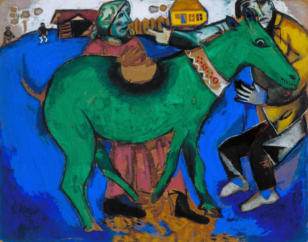
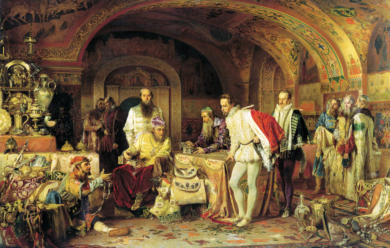
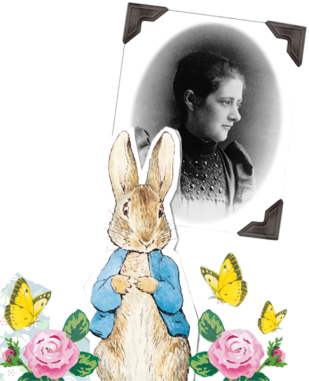


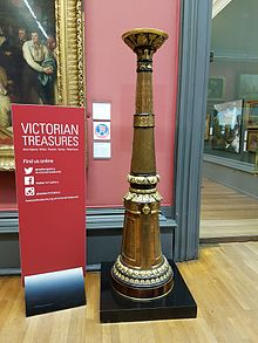

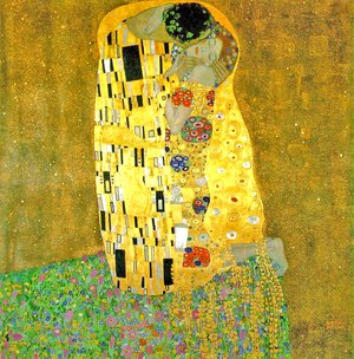

Web site designed, created and maintained by Janet Groome,
Handshake Computer Training.
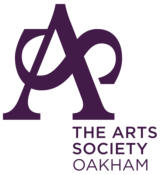
Lectures 2017/2018 Membership Year
Lectures start at 11.00am with coffee from
10.15am and are held (except in August and
December) at Victoria Hall, Oakham
2018
24 May
Hilary Guise
Marc Chagall and the
supremacy of Blue
No synopsis yet.
Background on Marc Chagall
Marc Chagall, 'The Green Donkey' 1911
28 June
Patsy Erskine Hill
The British at the Court of the Tsars
Spies, Merchants and Adventurers… Before the
eighteenth century, foreigners were feared as
unholy, and very few had ever entered Russia. In
1700, however, Russia needed help: Peter’s army
was a disorganized rabble with no military tradition
and no discipline; he had almost no coastline, and
thus no navy; his countrymen were illiterate and
fearful of progress. Foreigners were hired in to
help in all these fields, and British merchants
became increasingly numerous. Later, when
Russia became a world power, it attracted ever-
growing numbers of tourists and adventurers,
lured by its exoticism, tales of stupendous
aristocratic wealth, and sometimes, its remoteness
from the long arm of British justice.
Above: Ivan IV of Russia Shows His
Treasury to Jerome Horsey
(Alexander Litovchenko, 1875)
English house in Moscow
English Silver at the Court of the Tsars
Background to trade between Russia and Britain
Background of the London Muscovy Company
There is no lecture in July.
23 August
Lecture and Summer Lunch (the lecture is
included in your membership).
We hope you will join us for our Summer Lunch
afterwards, there is an additional cost for the
lunch. See booking details below
Elizabeth Merry
Town Mouse, Country Mouse: Art and Nature
in the work of Beatrix Potter
The only daughter of well-off
parents, Beatrix Potter’s
childhood was spent in almost
complete seclusion in West
London. The ordered
formality of the household
made no concessions to the
demands of children, so
Beatrix and her brother
Bertram created their own
absorbing creative world
upstairs in the
nursery and
schoolroom.
Inspired by
summers spent
in Scotland and
the Lake District, she became a passionate
amateur naturalist, drawing, painting, dissecting
and examining whatever flora and fauna she and
Bertram could smuggle back into the London
house.
By the time she was a young adult, still living at
home, unmarried and still very much under the
jurisdiction of her parents, her watercolour
paintings of botanical and zoological subjects
were meticulous, detailed and accomplished. She
could undoubtedly have become a professional
botanist – indeed a paper of hers on the spores of
Fungi was read out at the Linnaean Society of
London in 1897, but because she was a woman
her theories were dismissed. It was with the
creation of Peter Rabbit that Beatrix Potter’s
private world became the key to her future
independence; and those unique and exquisitely
illustrated little books have ensured her place
among the Immortals of children’s literature.
Beatrix Potters web site
Lecture and summer buffet lunch at Greetham
Valley Golf Club
Thursday 23 August 2018
Lecture: ‘Town Mouse, Country Mouse’ at
11.00am (coffee available from 10.15am)
Lunch to follow the lecture. Cost for lunch is £23
per member and £28 per guest, to include the
lecture.
Click here for a booking form and further details
27 September
Thomas Chippendale the Younger and George
Bullock
Janusz Karczewski-Slowikowski
After Chippendale’s death in 1779, his eldest son,
also named Thomas, carried on his cabinet-
making business until 1804. Chippendale the
Younger & George Bullock were brilliant designers
and skilled craftsmen. Their original and stylish
furniture designs belong to the later neo-classic
styles of the late 18th and early 19th centuries.
Chippendale Jr. died in 1822 at the age of 73 but
Bullock died aged 35 in 1818 - a tragically young
age but one by which he was already known as an
“eminent artist” of “peculiar
genius”; both were
influential in transforming
the character of early 19th
century design and
Bullock’s work was to
foreshadow the aesthetic
movement of Victorian
times. The furniture of
Stourhead, Wiltshire is one
of the younger
Chippendale’s best known
and documented
commissions.
A pair of candelabras by George Bullock
More information on George Bullock
25 October & AGM (The last lecture in the current
membership year)
Edward Saunders
Petra, the Rose Red City
Petra, built within the Biblical mountains of Edom
in southern Jordan, is one of the most
extraordinary and memorable sites of the ancient
world. It was once the centre of a great civilisation
established by
a people called
the Nabateans,
who came into
the area from
the Arabian
peninsular
about 500 BC,
and their
surviving tomb
monuments,
carved from the solid rock, still astound and
overwhelm today.
In contrast, Palmyra, to the north in the Syrian
desert and east of Damascus, boasts a vast
assembly of ruins scattered across the desert
floor, which, with their richly-carved ornament and
the splendour of the column-lined streets, evoke
the grandeur and ostentation of the late Roman
Empire. As Petra began to decline in the 2nd
century AD, so Palmyra rose to its height, but both
cities at first succumbed to a diminution of trade
as the Roman Empire itself began to fall apart,
and then they were successively demolished by a
series of earthquakes from the 6th century
onwards.
Recommended Reading: Petra and Palmyra by
Iain Browning, published by Chatto and Windus.
UNSCO web site page on Petra
National Geographic page on Petra
New Membership Year
22 November
Sophie Oosterwijk
Peasant Pastimes? The Art of Pieter Bruegel
the Elder.
Pieter Bruegel (also
Brueghel) the Elder was the
most significant artist of
Dutch and Flemish
Renaissance painting, a
painter and printmaker from
Brabant, known for his
landscapes and peasant
scenes (so called genre
painting); he was a pioneer in
making both types of subject
the focus in large paintings.
He was a formative influence on Dutch Golden
Age painting and later painting in general in his
innovative choices of subject matter, as one of the
first generation of artists to grow up when religious
subjects had ceased to be the natural subject
matter of painting.
Above: The Peasant Wedding Pieter Bruegel the
Elder 1567
January 2019
Douglas Skeggs
Klimt and the Viennese Succession
Gustav Klimt (July 14, 1862 – February 6, 1918)
was an Austrian
symbolist painter
and one of the most
prominent members
of the Vienna
Secession
movement. Klimt is
noted for his
paintings, murals,
sketches, and other
objects d'art. Klimt's
primary subject was
the female body, and
his works are marked by a frank eroticism. In
addition to his figurative works, which include
allegories and portraits, he painted landscapes.
Among the artists of the Vienna Secession, Klimt
was the most influenced by Japanese art and its
methods.
Click here to see Klimt’s complete works & read
more about him
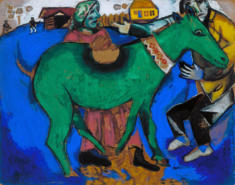
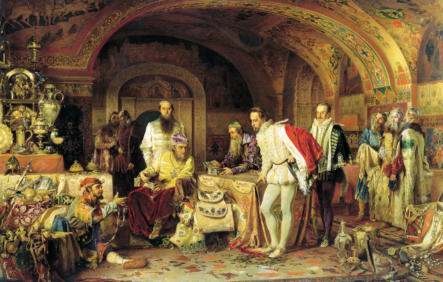

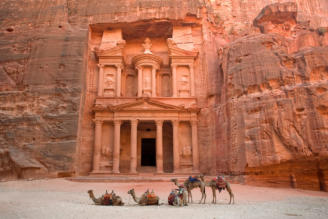

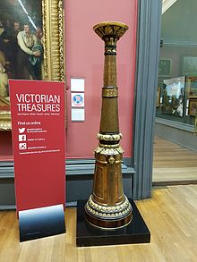
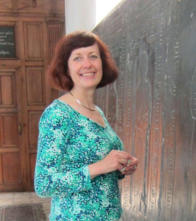
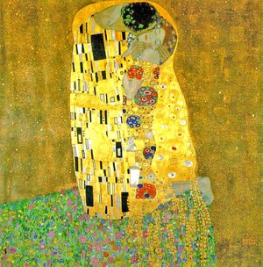
Web site designed, created and maintained by Janet Groome,
Handshake Computer Training.

























